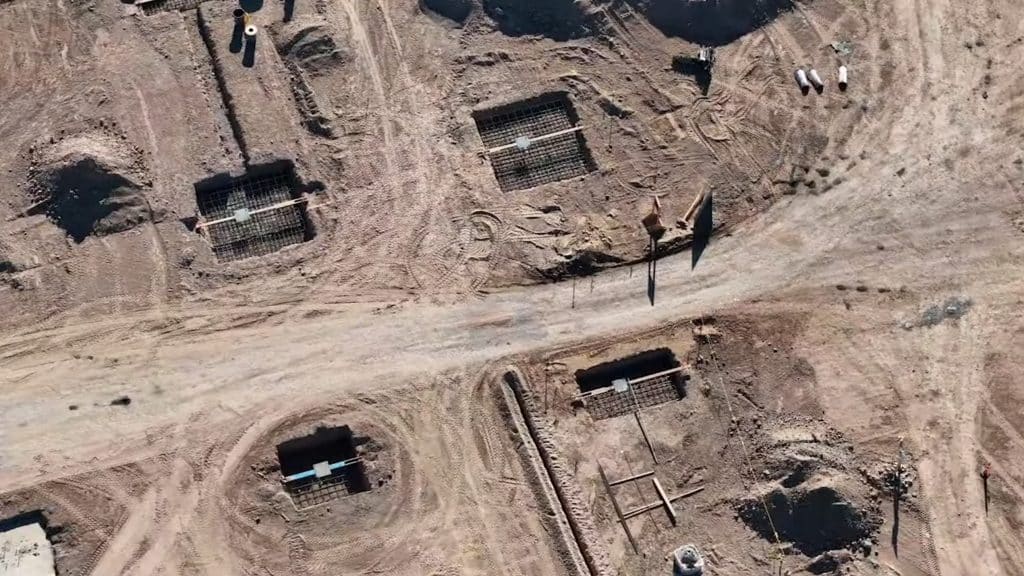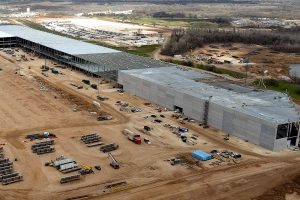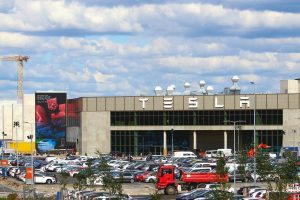- 🏗️ Tesla is constructing a dedicated Semi plant at Gigafactory Nevada with significant progress observed.
- 🏢 The facility earns the nickname “concrete jungle” as it plans to use one million yards of concrete.
- 🚚 Tesla aims to start production by the second half of 2025, targeting deliveries by early 2026.
- 📦 Tesla has already delivered early Semi units to major companies like PepsiCo and Walmart.
- 🌍 There are plans to expand the Tesla Semi’s presence in Europe, showcased at a convention in Munich.
Tesla’s ambition to revolutionize the electric vehicle industry extends well beyond passenger cars. With the developments at their Gigafactory in Nevada, the dedicated Tesla Semi plant is poised to redefine the trucking and logistics landscape. Join us as we delve into the intricacies of this monumental project and what it means for the future of freight transport.
A Journey Through the Concrete Jungle
Tesla’s new Semi plant, famously referred to as a “concrete jungle,” represents a colossal endeavor. With plans to lay one million yards of concrete at the Gigafactory Nevada site, this massive investment underscores Tesla’s commitment to advancing sustainable transportation infrastructure. Here’s what makes this project an engineering marvel:
- Construction Scale and Materials:
The plant’s construction is a feat of modern engineering, with extensive use of concrete to ensure durability and scalability. The sheer volume of concrete planned illustrates the size and scope of the project, designed to handle production demands and future expansions. - Strategic Location:
Situated within Gigafactory Nevada, the plant benefits from strategic positioning that leverages existing Tesla operations. This enables efficient logistics, facilitating the smooth movement of materials and finished goods.



Production Timeline and Expectations
Tesla’s roadmap for the Semi is as ambitious as it is rigorous. The company aims to initiate production by the second half of 2025, with customer deliveries expected in early 2026. This timeline reflects Tesla’s commitment to meeting market demands and pushing the boundaries of electric vehicle capabilities:
- Phased Production Rollout:
By setting a clear production timeline, Tesla ensures that its resources are efficiently allocated and operations are streamlined, allowing for a phased introduction of the Tesla Semi into the market. - Tackling Industry Challenges:
The production of electric semis involves addressing challenges such as battery range and charging infrastructure. Tesla’s strategic planning and innovation aim to overcome these industry hurdles, paving the way for widespread adoption.
Early Adoption by Major Brands
Tesla has already made significant strides with the Semi in its initial rollouts. Early customer deliveries have been made to industry giants such as PepsiCo and Walmart, underscoring the demand and confidence in electric trucking solutions:
- Partnerships with Major Corporations:
Collaborations with such high-profile companies not only validate the Tesla Semi’s appeal but also highlight Tesla’s strategic partnerships to pioneer new transport technologies. - Sustainability Goals:
Early adopters are often companies with pronounced sustainability targets. The integration of Tesla Semis into their logistics aligns with efforts to reduce carbon emissions and meet eco-friendly transportation goals.
Global Aspirations: Taking the Tesla Semi International
Beyond domestic markets, Tesla has its sights set on international expansion. The recent showcase of the Tesla Semi in Munich reveals an eagerness to capture market share in Europe:
- Market Penetration Strategies:
By exhibiting at major conventions such as the IAA in Munich, Tesla targets global markets hungry for sustainable transport solutions, aiming to establish a foothold in Europe’s competitive trucking industry. - Addressing Regulatory and Cultural Variations:
Moving into new regions involves understanding different regulatory environments and consumer preferences. Tesla’s approach suggests a comprehensive strategy to address these challenges and customize its offerings.
Conclusion: Driving the Future of Logistics
The Tesla Semi is more than just an electric truck; it is a testament to innovation, sustainability, and the drive to transform the logistics industry. With its dedicated plant nearing completion, a strategic production plan, and strong customer interest, Tesla is poised to lead a revolution in freight transport.





